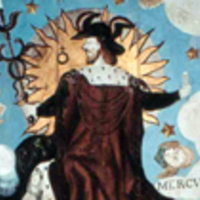Research Interests:
Research Interests:
Research Interests:
Research Interests:
Research Interests:
There is increasing recognition of the need to treat not only patients but also families and carers with dignity, particularly at times of stress. New hospital design includes rooms variously labelled 'Quiet', 'Family' or 'Interview' for... more
There is increasing recognition of the need to treat not only patients but also families and carers with dignity, particularly at times of stress. New hospital design includes rooms variously labelled 'Quiet', 'Family' or 'Interview' for these purposes. This paper reports on the design process used during the development of the New South Glasgow Hospitals to meet user and service owner needs. The artist leading the project utilised a biophilic design approach and a participatory process of working to both understand users' issues and also to involve users in the design of elements of the scheme.
Research Interests:
Research Interests:
We increasingly find co-creativity and participation as central aspects of practices across art and design (including architecture). The politics of social justice and equality continue to underlie and inspire these practices. The... more
We increasingly find co-creativity and participation as central aspects of practices across art and design (including architecture). The politics of social justice and equality continue to underlie and inspire these practices. The discourse on web 2.0 addresses co-creativity and participation, but from quite different perspectives. One of the key aspects of these discourses is the extent to which they recognise context as a critical factor. The other critical factor is the understanding of equality, not in terms of a general social aspiration, but rather as a function within a creative practice. We believe that practices can offer distinctive understandings to debates on social justice and equality. Practitioners seeking social justice and equality describe the importance of involving participants and co-creators, not through evenness of participation, but rather through discernment opening out to larger audiences.
Research Interests:
Research Interests:
Research Interests:
Research Interests:
The paper will draw on a key case study, GROVE, the art and architecture strategy recently completed in NHS Greater Glasgow & Clyde’s multi-award winning New Stobhill Hospital. GROVE was developed by poet and artist Thomas A Clark and... more
The paper will draw on a key case study, GROVE, the art and architecture strategy recently completed in NHS Greater Glasgow & Clyde’s multi-award winning New Stobhill Hospital. GROVE was developed by poet and artist Thomas A Clark and Andy Law, architect, Reiach & Hall, Edinburgh. In GROVE Clark and Law focused on the experience of 'waiting' in hospital. Their aim was to make waiting a reflective experience and to counteract the anxiety associated with hospitals.
Clark and Law argue that the New Stobhill Hospital is a single work of art, and this is demonstrated by the 'composing' of spaces within the unifying theme of 'A grove of birch in a forest of larch'. The artworks within the architecture that make up GROVE all represent or relate to nature, including short poems installed on walls and windows by Clark, as well as visual artworks (paintings, installations, video) by collaborating artists. For example, across the outpatient clinic waiting areas a poem, a series of videos and installations contribute elements within the architecture to create a sequence of distinctive spaces.
Clark and Law argue that the New Stobhill Hospital is a single work of art, and this is demonstrated by the 'composing' of spaces within the unifying theme of 'A grove of birch in a forest of larch'. The artworks within the architecture that make up GROVE all represent or relate to nature, including short poems installed on walls and windows by Clark, as well as visual artworks (paintings, installations, video) by collaborating artists. For example, across the outpatient clinic waiting areas a poem, a series of videos and installations contribute elements within the architecture to create a sequence of distinctive spaces.
Research Interests:
Research Interests:
Reflection on Place of Origin, a 10 year artist-led landscape as art project.
